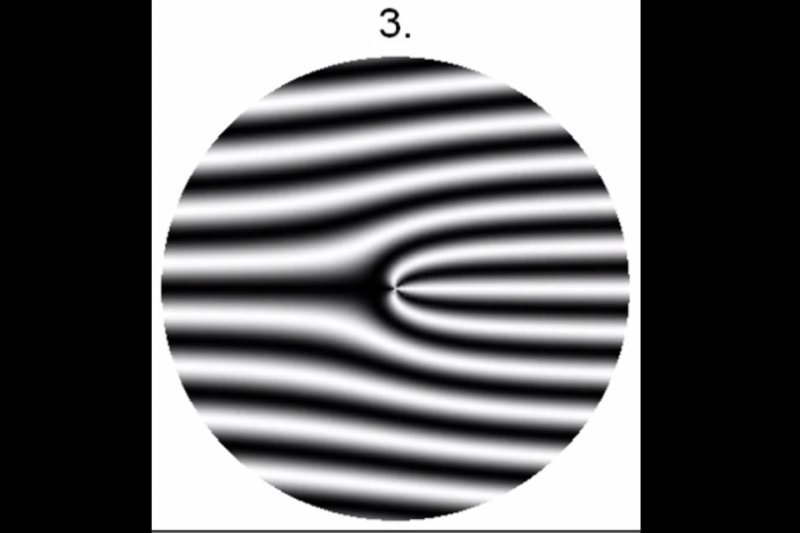An interference pattern recorded by a neutron beam hologram. Photo by NIST
GAITHERSBURG, Md., Oct. 20 (UPI) -- Researchers have for the first time managed to create a hologram using neutron beams instead of lasers. The new neutron beam holograms reveal details about the insides of solid objects, a feat impossible for laser holograms.
Unlike a photograph, which simply records the light reflected through a lens and onto a sensor, a hologram is a recording of a light field.
Scientists typically create a hologram by shining a laser on an object and recording the interference pattern created as the light waves collide with each other as they bounce of an object. The method allows for a more detailed rendering of an object -- the reason why holograms can showcase an image in 3D.
Unfortunately, laser holograms can't see through an object and record details about its interior, but neutron beams can.
Scientists already use neutron beams to study the insides of new materials. While adept at penetrating objects, neutron beams aren't all that precise, and don't render very detailed images. Neutron beam data is usually translated visually as a graph -- a roughly approximation of an object's inner structure.
Recently, researchers at the National Institute of Standards and Technology developed a way render greater light field details from neutron beams. When scientists passed neutron beams through an aluminum cylinder with spiral nanostructures etched into its cross section, they were able to impart a unique twist to the beam. Each individual neutron underwent a phase change and released details necessary to form a hologram.
When combined with an interferometer, a sensor that measures interference patterns, the scientists were able to use neutron beams and their aluminum cylinder to create holograms revealing the inner details of objects.
Scientists detailed the process in a new paper published this week in the journal Optics Express.
"Other techniques measure small features as well, only they are limited to measuring surface properties," Michael Huber, a scientists in NIST's Physical Measurement Laboratory, said in a news release. "This might be a more prudent technique for measuring small, 10-micron size structures and buried interfaces inside the bulk of the material."















